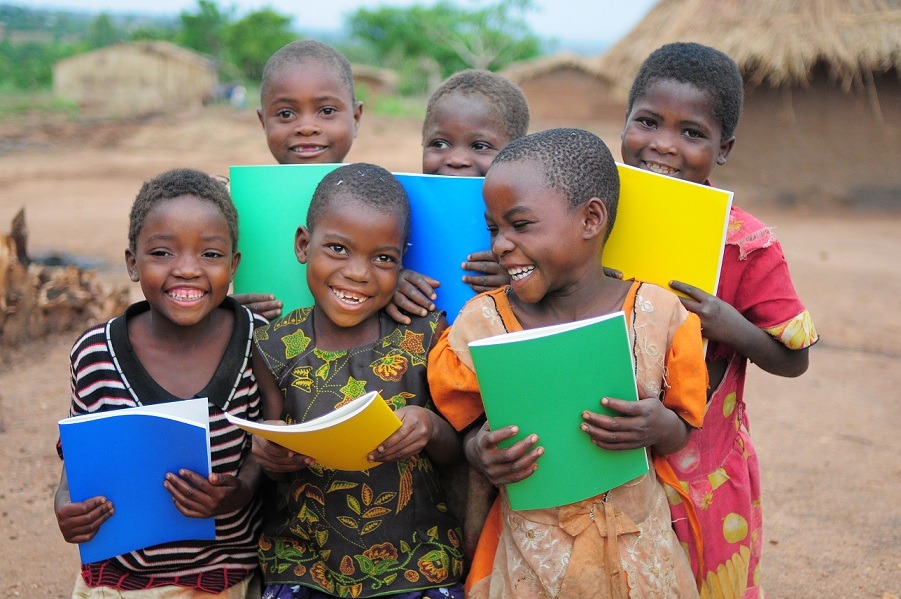Once upon a time, in a vibrant African village named Umoja, a young girl named Amina dreamed of a future filled with hope and equality. Her dreams were nurtured by the joyful laughter of the children, the warm embrace of the community, and the stories of resilience passed down through generations. Little did she know that her life would soon intertwine with the difficulties African children face in accessing quality education.
Amina, an inquisitive and passionate girl, held a vision in her heart that went beyond the boundaries of her village. She yearned to share her dreams with the world and become an advocate for children’s rights. Amina’s mind was filled with questions: How could she inspire change? What could she do to make a difference? These questions led her on a journey to find her purpose.
On the eve of the International Day of the African Child, Amina discovered a hidden path leading to the edge of the village. Guided by the moonlight and the whispers of the wind, she embarked on an adventure into the unknown. Along her path, she encountered a wise elder, Mama Zara, known for her kindness and wisdom. Mama Zara recognised Amina’s hunger for knowledge and gently guided her, imparting ancient stories and sharing the wisdom of generations past.
With newfound inspiration, Amina returned to Umoja, her spirit ignited with a desire to bring change. She decided to organise an event that would not only celebrate the International Day of the African Child but also raise awareness about the importance of education and the challenges faced by children in her village and beyond.
Amina enlisted the help of her friends and the support of the entire community. Together, they transformed the village square into a colourful stage where performances, poetry readings, and speeches would take place. They reached out to neighbouring villages, inviting children from far and wide to join the festivities and share their stories.
As the sun rose on the International Day of the African Child, the village square shimmered with anticipation. Children from different backgrounds and cultures gathered, each one with their unique stories and dreams. Amina, standing tall and confident, addressed the crowd, passionately speaking about the power of education and the need for equal opportunities for all children.
The day was filled with laughter, dance, and tears of joy. Children showcased their talents, singing songs of unity and resilience. Amina’s dream was coming true—one by one, hearts were touched, and minds were awakened to the pressing need for change.
News of the Umoja celebration spread like wildfire, reaching the ears of influential figures and organisations committed to children’s rights. They recognised the potential in Amina’s movement and lent their support, providing resources and opportunities to amplify her voice even further.
Months passed, and Amina’s message reverberated across borders and oceans. Her tireless efforts garnered attention at the highest levels, leading to policy changes and increased investment in education throughout Africa. Amina became a symbol of hope, inspiring countless children to believe in their dreams and pursue their passions.
The celebration in Umoja became an annual tradition, growing bigger each year, but the true testament to its success was seen in the changed lives of the children. Education flourished, opportunities multiplied, and the barriers that once held them back began to crumble. Alas, this is Amina’s dream, and those of other African children and the joy reverberating through Umoja face major obstacles according to the UNESCO Global Education Monitoring report.
Read also: Financing the Education Gap: Can African Countries Afford their SDG 4 Benchmarks?
Universal basic education and foundational learning in Africa
In the 2022 report, ‘Born to Learn’ which spotlighted basic education completion and foundational learning in Africa, it was clear that the two main stepping stones for more advanced abilities that assist economic and social development and for equitable and inclusive societies are universal basic education completion and foundational learning.
Today, however, one in five African children of basic school age do not attend school, one in three do not finish primary school on time, and one in four never finish. In remote areas and among the poorest children, just about one in two finish primary education. Amina and her friends might not reach their dreams, beyond the borders of Umoja, their little African village for a lack of access to quality basic education.
While there is a lack of data on learning, the information that is available demonstrates that learning levels are pretty low.
Even though every child is born with the desire to learn, just one out of every five primary school students who graduate meet the basic competence standards needed to continue their education and fulfil their full potential.
Read also: Tinubu’s omission of education in his inaugural address
Combining completion and learning statistics, the findings indicate that children in Africa have about a fifth of the likelihood of being future-ready as children in the rest of the globe. These figures precede the COVID-19 pandemic, which has had a significant detrimental effect on education.
Sustainable Development Goal 4 and the 2016–25 Continental Education Strategy for Africa are two ambitious goals that African countries have committed to, and the cornerstone of both is foundational learning. Additionally, they took part in the SDG 4 benchmarking exercise. Overall, four out of five countries have a national target for the percentage of primary school students who complete their education, while two out of three have a target for the minimum proficiency rate in reading and mathematics in the foundational grades and at the end of primary education.
These serve as a foundation for in-depth policy discussions both inside and between countries. African countries want to raise their primary completion rate from 70 per cent to 85 per cent and cut their out-of-school rates by nearly two-thirds by the year 2030. They want to raise the proportion of pupils who are proficient in reading and mathematics at the end of primary school by 0.9 percentage points and 1.4 percentage points, respectively, per year.
“Yet the scant data that exist on past trends suggest that African countries will struggle to achieve those targets without major changes,” the report stated. “Since the 1970s, analysis of people who left school after five or six years shows that primary schools’ ability to ensure even rudimentary literacy skills for this group has declined in 13 of 31 African countries with data. In 60% of countries, the rates have remained stable over this long period.”
The issues must be understood in light of the extraordinarily poor conditions that African children and educational systems endure. Malnutrition and poverty are major socioeconomic factors: 31 per cent of children in 2020 were underweight for their age. Children’s learning environments are also impacted by conflict and instability, which worsens anxiety and stress levels and makes it unsafe to travel to school, among other problems. Between 2015 and 2019, at least one incident of military use at a school or university was reported in 28 different nations, 15 of which were in Africa.
Children who are underprivileged, undernourished, unprepared for school, and who speak a language other than the one used for instruction present a special set of issues, but educational techniques frequently fail to prepare teachers for them. The amount of time spent on reading exercises is insufficient, as repetition and strictness are employed to maintain order in the classroom.
Despite spending more of their budgets on education than governments in other regions of the world, African governments nevertheless face substantial financial challenges. Spending per student in low-income countries is roughly $50 USD per year, which is still terribly insufficient.
As it frequently focuses on development-related activities, external financing is still a factor that could have a significant impact. Additionally, the negotiation and evaluation of sponsored programmes present chances for in-depth discussion. However, there are concerns about whether donor-led programmes adequately involve governments and national experts, focus on the right challenges, are coherent, ensure partner cooperation, and are cost-effective.















